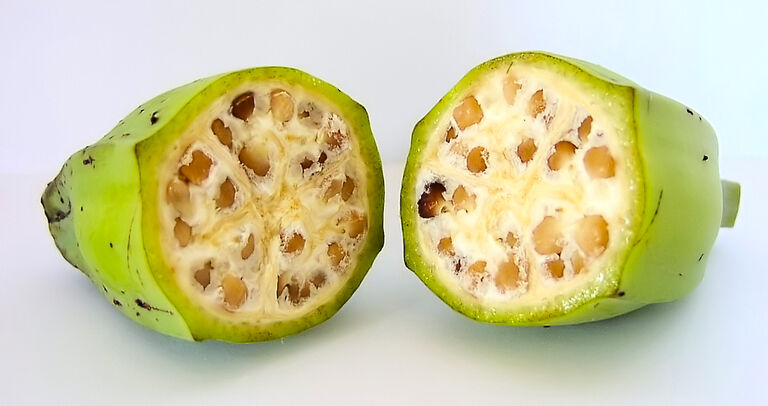10+ Fruits And Vegetables That Looked Completely Unrecognizable In The Past
You've probably heard the kerfuffle about GMOs, or genetically modified food, but have you heard about naturally modified food? Farmers have been selectively breeding food for centuries, and it's a good thing they did. Produce of the olden days was often tough, bitter, and full of seeds. While adding chemicals or insect genes to food is obviously a hazard, there's nothing wrong with naturally breeding new species of fruits and vegetables — and without those changes, our modern supermarket aisles would look a lot less appetizing.
1. Apples
They say there's nothing more American than apple pie, and we couldn't have that without apples. The sweet, tart, and crunchy texture of a fresh apple is the perfect snack on a picnic, or on a lunch break — but prehistoric apples were much different.
Sour, Then Sweet
The first apples originated in Kazakhstan, Kyrgyzstan, Tajikistan, Uzbekistan and China, and the fruit had a long history before America was formed. Called "The Asian Wild Apple," it was much smaller, plus the flavor was tangy and not nearly as sweet. A smart farmer began breeding the sweeter plants and brought them here to the US, and we salute to that!
2. Ancient Greens
Another food that's drastically changed over the years is cruciferous vegetables. Nowadays, thanks to pioneering vegetarians and vegans, green veggies like broccoli, cabbage, cauliflower, Brussels sprouts, kale, and kohlrabi are at the front of the health food movement. Centuries ago, though, those options didn't even exist.
Cruciferous Vegetables
Instead, healthy humans snacked on those veggies' single common ancestor: the Brassica oleracea, or wild cabbage. Farmers put a lot of work into cultivating B. oleracea into versatile veggies with different features that they liked, like long leaves or big flowers. These veggie inventions were instant hits and are still popular today, at least to most adults.

